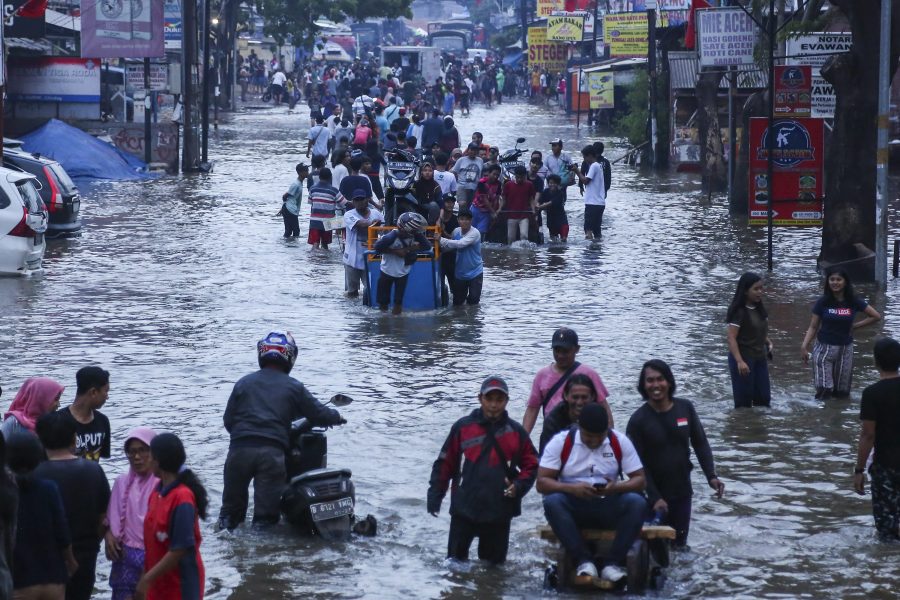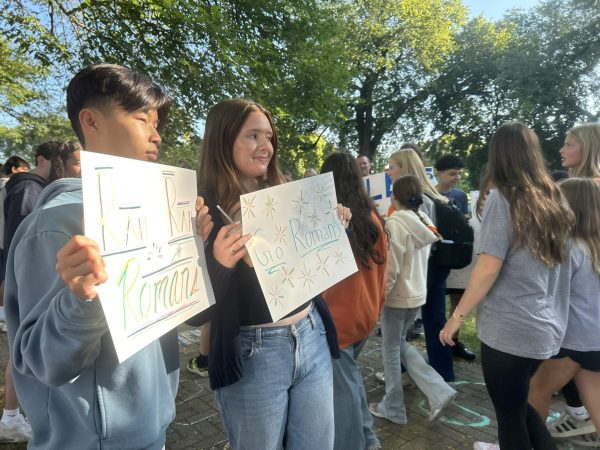The Indonesian Floods of 2020
January 20, 2020
Angela Gil, Staff Writer
Indonesia is facing the worst flooding the country has seen since 2013. With a death toll of 66 as of January 8th, the heavy rain that started on New Year’s Eve is proving fatal in low-income regions. The flooding, encouraged by rising sea levels and sinking islands, is costing the Indonesian government upwards of 650 million dollars.
These floods are devastating a country that is accustomed to seasonal monsoons because the common tropical rain’s effects have been augmented by climate change and decisions in government. Climate change, caused by greenhouse gases in the atmosphere, has led to melting polar ice caps, which, in turn, force sea levels to rise dramatically. All over the world, coastal cities, like Jakarta, Indonesia, are at risk of shoreline erosion and flooding. In addition to impending environmental doom, Jakarta, Indonesia’s capital, is sinking into the ocean. According to the BBC, Bandung Institute of Technology’s Heri Andreas, who studies Jakarta’s land subsidence, predicts that “by 2050 about 95% of North Jakarta will be submerged.” The island is sinking because people living on the island are using the groundwater at an alarming rate. Like a water balloon with a hole in it, as water is pumped out of the ground, the city falls. Already, some parts of the city that were habitable in the 1970s are submerged under four meters of seawater.
The government has not imposed regulations to prevent this sinking effect, and they likely won’t for a long time. According to Angelica Blanch, a student in the Class of 2021 at Jakarta Intercultural School (JIS), the flooding “should be a wake-up call to all of the leaders, but, unfortunately, there’s little action being made.” In addition, she said that “The people that the government is most likely to listen to, the middle to upper-class, are ignorant about the situation. It’s almost like it’s just another rain to them because they have a solid structure that can support them… I don’t think it hits them as much that there are people in the same city drowning because of the floods.”
Leaena Chinniah, also a Junior at JIS, agreed, adding that the flooding exposes the “juxtaposition of how privileged… people see the rain, versus the underprivileged people who have to fight for their lives to survive… Indonesia relies on so much agriculture that, even when the flood clears up, there will be so many ramifications to their businesses.” The lower-income regions don’t have the infrastructure to combat the rising sea levels, and the people living there are vulnerable during disasters like the current floods. Leaena elaborated, mentioning the “kampungs” of Indonesia, an Indonesian and Malay term that refers to rural villages. When asked about the effect of the flooding on regions of the island of Java, she answered, “It’s mostly main streets, but a lot of it is in the kampung.” With some of the fastest-increasing rates of inequality in East Asia, Indonesia is no stranger to economic disparity. The flood will only highlight the inequality running rampant through the islands.
Students at Latin, overwhelmingly, hadn’t heard anything about the floods. Sophomore Lily Ruiz said that she feels American media and news networks tend to “only publicize problems that we feel will appeal with the public.” She took the Australian wildfires as an example. “Mainly what’s being publicized… is the [destruction] of wild animals, homes, and people. Yes, those are very big problems I feel we should try to find solutions for as fast as possible, but floods cause death and destruction as well.”
Sophomore Lauren Valentin explained that she hadn’t “been looking at the news much lately,” but that she felt that the news she had heard about was centered around the United States. The regional focus in the media, she thought, wasn’t “an uncommon issue.” The need for a broader scope in the media seemed to be a common thread in Latin student responses.
For instance, senior Sehar Dey-Kholi said she had “heard about the Indonesian floods solely because I have family friends there,” and that the United States tends to report on news in European and/or Western nations. As her final thought, she said, “We need to talk more about what developing countries are going through.” Again, she echoed the Lauren’s sentiment.
On the other hand, junior Nick Pranger thought that it was possible to find a balance between international and local news if you looked at multiple sources, although “we tend to cover our issues more than those of other countries.” High school students tend to stick to one or two sources for their personal news browsing, but, if interested in finding more international news sources, students should refer to the international sections of American news websites, or to sources based overseas, like Al Jazeera.























































Robert Igbokwe • Jan 25, 2020 at 7:40 pm
What a well-written an thorough piece, Angela!! 🙂 🙂 🙂 It seems that there are so many climate change-related issues happening worldwide that we are becoming desensitized to these tragedies. But it’s so essential that we keep other nations in mind, and hopefully work towards ways to resolve these issues. I totally agree with Nick’s point about how looking at multiple sources can help us keep up to date with local and international sources.